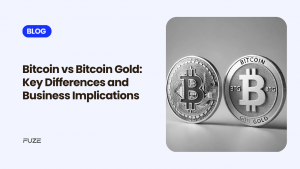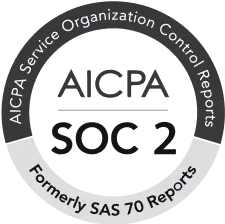The Single Euro Payments Area (SEPA) has completely changed how payments move across Europe. Before SEPA Payments, sending money between European countries often meant slow processing times, high fees, and plenty of frustration. Today, thanks to this initiative, euro payments are faster, cheaper, and standardized.
In this guide, we’ll break down SEPA in simple, human language. You’ll learn:
-
What SEPA is and why it was created
-
How SEPA transfers work
-
The different SEPA payment types (credit transfer, direct debit, instant)
-
Pros and cons for businesses outside Europe
-
A comparison with traditional international payment methods like SWIFT
-
What the future of SEPA might look like in a world moving towards tokenization and digital assets
What is SEPA?
SEPA stands for Single Euro Payments Area. It’s a European initiative launched to make cross-border euro transactions as simple as domestic ones.
The project was developed by the European Payments Council (EPC) with backing from the European Commission and the European Central Bank (ECB). Its main goal was to create one large, unified market for euro payments — removing the friction of “international transfers” between European countries.
Today, SEPA covers 36 countries:
-
All 27 EU member states (France, Germany, Spain, Italy, Netherlands, etc.)
-
Non-EU countries like Iceland, Norway, Switzerland, Monaco, San Marino, Andorra, Vatican City, and Liechtenstein.
In other words, if you live in or work with anyone in these countries, you can move euros around almost as easily as sending money to someone in your own city.
Why SEPA Was Needed
Before SEPA, sending money across European borders was a hassle:
-
High fees: Banks charged much more for international transfers.
-
Slow settlement: Transfers could take several days.
-
Inconsistency: Each country used its own rules, formats, and standards.
This was especially frustrating for businesses working across Europe. Imagine being a company in Germany trying to pay suppliers in Spain, France, and Italy — each transfer came with its own costs, delays, and admin work.
SEPA solved this by standardizing everything: the formats, the timelines, and even the cost structures.
How SEPA Transfers Work
All SEPA transfers rely on two important codes:
-
IBAN (International Bank Account Number) → Identifies the recipient’s bank account.
-
BIC (Bank Identifier Code) → Identifies the recipient’s bank.
With these, banks across the SEPA network can communicate seamlessly.
Think of it like a single payment language across Europe. Instead of every country having its own rules, SEPA ensures every euro transfer follows the same playbook.
Key Benefits of SEPA
Here’s what makes SEPA so powerful:
1. Standardization and Efficiency
SEPA removes the difference between a “domestic” and a “cross-border” euro payment. Everything works under one set of rules.
-
Same formats everywhere (IBAN/BIC).
-
Fewer errors due to standardized structures.
-
Easier accounting for businesses operating in multiple countries.
2. Speed and Convenience
-
SEPA Credit Transfers (SCTs) settle in 1 business day.
-
SEPA Instant Transfers (SCT Inst) settle in seconds, 24/7, 365 days a year.
This speed has been a game-changer for both individuals and companies.
3. Cost Savings
-
Same pricing rules for domestic and cross-border transfers.
-
No hidden charges from “intermediary banks” (common in SWIFT).
-
Transparent fees — you know exactly what you’ll pay.
4. Security and Reliability
SEPA transfers are backed by European financial infrastructure, strict regulations, and modern encryption. This makes them highly secure.
5. Transparency
-
Standardized messaging formats → easier to track payments.
-
Clear dispute resolution rules → if something goes wrong, there’s a framework to fix it.
6. Wide Reach
SEPA covers all EU countries and several non-EU ones, making it one of the largest harmonized payment zones in the world.
Types of SEPA Payments
Not all SEPA transfers are the same. Depending on your needs, you can choose between three main options:
1. SEPA Credit Transfer (SCT)
-
Best for one-off euro payments.
-
Example: Paying a supplier in Italy from Germany.
-
Processing time: Usually 1 business day.
2. SEPA Direct Debit (SDD)
-
Best for recurring payments (subscriptions, bills, salaries).
-
Two schemes:
-
Core (for consumers, e.g., utility bills).
-
B2B (for business payments, e.g., monthly supplier invoices).
-
3. SEPA Instant Credit Transfer (SCT Inst)
-
Real-time transfers within seconds.
-
Available 24/7, 365 days a year.
-
Example: Paying a freelancer in Spain at midnight — funds arrive instantly.
How to Make a SEPA Transfer
Credit Transfer (SCT):
-
Log into your bank app.
-
Select “SEPA Transfer.”
-
Enter IBAN (and sometimes BIC).
-
Add amount + reference.
-
Confirm. Funds arrive by next business day.
Direct Debit (SDD):
-
Sign a mandate allowing the company to debit your account.
-
Share IBAN/BIC.
-
Payments are auto-collected on schedule.
Instant Transfer (SCT Inst):
-
Check if your bank supports instant SEPA.
-
Choose “Instant Transfer.”
-
Enter IBAN.
-
Confirm. Money arrives within seconds.
SEPA vs SWIFT: What’s the Difference?
Many people confuse SEPA with SWIFT — but they’re very different.
-
SEPA → Only for euros within SEPA countries. Fast, cheap, standardized.
-
SWIFT → Global network, covers all currencies, but slower and more expensive.
Example:
-
Sending €500 from Germany to Spain → Use SEPA, arrives in 1 day or instantly.
-
Sending €500 from Germany to the US → Must use SWIFT, may take 2–5 days and include extra fees.
SEPA for Middle Eastern Businesses
If you’re based in the Middle East but deal with European partners, SEPA can be a big advantage.
Pros:
-
Faster euro-based transactions.
-
Standardized process reduces errors.
-
Lower fees than traditional wires.
Cons:
-
Only useful if you’re dealing in euros.
-
Conversion fees apply if your business runs on USD, AED, or SAR.
-
SEPA doesn’t cover the Middle East directly.
For many companies, SEPA is valuable — but combining it with local payment systems or even crypto payment rails may be more efficient.
The Future of SEPA: Tokenization and Beyond
While SEPA has modernized euro payments, the financial world is evolving again. The next frontier is tokenization and digital assets.
-
CBDCs (Central Bank Digital Currencies): The European Central Bank is exploring a Digital Euro. This could integrate with SEPA to make payments even faster and more secure.
-
Tokenized assets: Payments linked to tokenized securities, real estate, or commodities may soon move seamlessly across SEPA.
-
Crypto integration: Platforms like Fuze Finance and others already provide faster, global, blockchain-powered payment solutions that work alongside SEPA.
SEPA will remain a backbone for euro payments, but in the long term, it’s likely to merge with or complement tokenized finance systems.
Final Thoughts
SEPA has brought Europe’s payments into the modern era — simplifying transfers, reducing costs, and speeding up transactions. Whether you’re sending one-time payments, collecting recurring bills, or making instant transfers, SEPA provides a reliable framework that millions of people and businesses depend on daily.
For businesses outside Europe, SEPA can still be valuable when working with euro partners — though alternatives like regional payment systems or blockchain solutions may sometimes be better suited.
As we move into an age of digital euros, tokenized assets, and crypto payments, SEPA’s role as a foundation for efficient payments will only grow stronger.
In short: SEPA made Europe’s payments simple. The next step is making global payments just as seamless.
Disclaimer: Virtual assets carry significant risks, including high volatility and potential loss of your entire investment. They are not backed by governmental protections, and recourse may be limited in case of loss. Always assess your risk tolerance, fully understand the risks, and seek independent financial advice if needed before investing.
Frequently Asked Questions (FAQs)
1. What is the difference between SEPA and SWIFT?
SEPA is designed for euro payments within Europe and a few surrounding countries. It’s fast, cheap, and standardized. SWIFT, on the other hand, is a global network that works with many currencies, but it’s usually slower and more expensive.
2. How long does a SEPA transfer take?
-
Standard SEPA Credit Transfers (SCTs) usually take 1 business day.
-
SEPA Instant Credit Transfers (SCT Inst) are completed in a few seconds, 24/7, all year round.
3. Are SEPA transfers free?
SEPA rules require banks to charge the same fees for domestic and cross-border euro transfers. In many cases, this means low or even zero fees — but some banks still apply small charges. It’s best to check with your bank.
4. Can I make SEPA payments outside Europe?
No, SEPA only works within the SEPA zone (36 countries). If you’re outside this zone, you’ll need to use other payment methods like SWIFT, local networks, or even crypto solutions.
5. Is SEPA safe?
Yes. SEPA payments follow strict European banking regulations and use advanced security measures like encryption and authentication. It’s one of the most secure payment systems in the world.
6. Who benefits most from SEPA Payments?
Both individuals and businesses benefit:
-
Individuals use it for cheaper, faster transfers when traveling or working in Europe.
-
Businesses gain efficiency, lower costs, and easier accounting when dealing with partners across multiple European countries.







